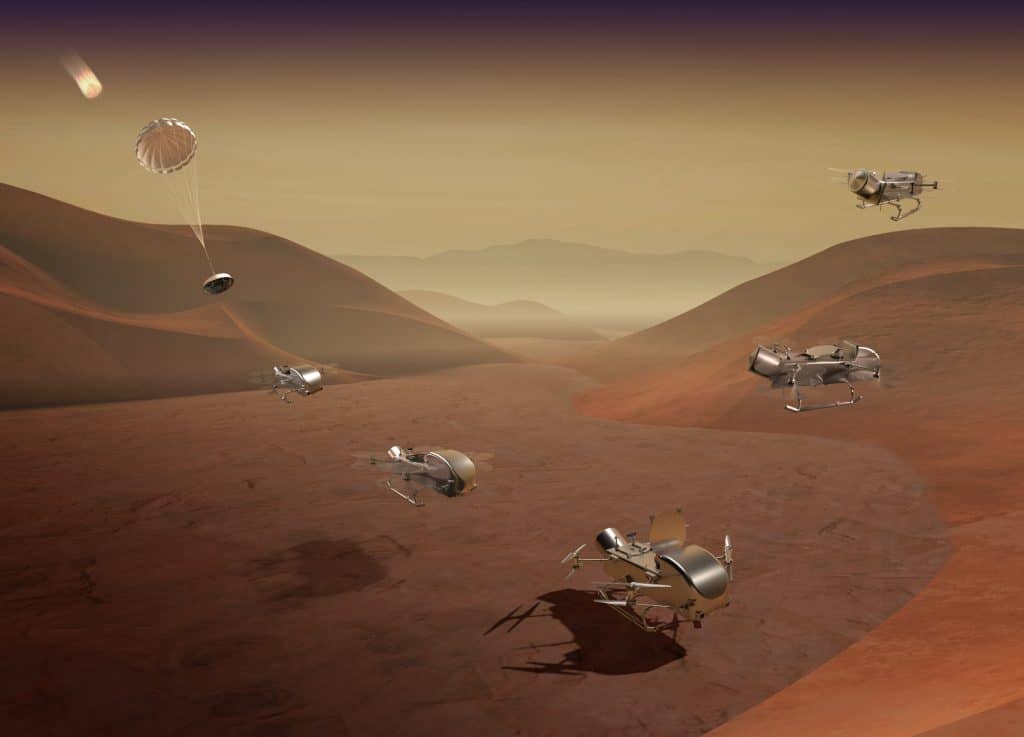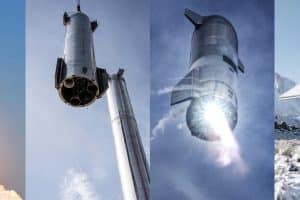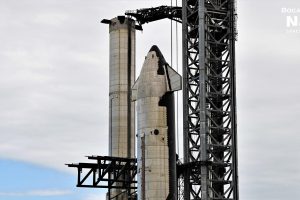- 🚀 NASA has given the final approval to proceed with the Dragonfly mission to Saturn’s moon Titan, with a launch scheduled for July 2028 and arrival at Titan in 2034.
- 💰 The mission’s cost has increased from the originally expected $850 million to $3.35 billion due to delays and supply chain issues during the COVID-19 pandemic.
- 🚁 Dragonfly is a double-rotor quadcopter designed to fly around various locations on Titan, with a total of 8 rotors, each measuring 1 meter in length, and a vehicle mass of around 450 kg.
- ⚡ Dragonfly will be powered by a Multi-mission radioisotope thermoelectric generator (MMRTG), similar to the Mars rovers Curiosity and Perseverance, allowing it to fly as high as 4,000 meters and up to 10 kilometers on a single battery charge.
- 🔥 After entering Titan’s atmosphere using a heatshield and parachutes, Dragonfly will be activated mid-air and autonomously locate a landing spot, a process expected to take over an hour and a half.
- 🏎️ Dragonfly will be capable of reaching speeds up to 22 mph on Titan’s surface.
After years of planning and preparation, NASA has officially given the green light to the highly anticipated Dragonfly mission, set to explore the enigmatic moon Titan, one of Saturn’s most intriguing natural satellites. This ambitious endeavor marks a significant milestone in our quest to unravel the mysteries of our solar system and deepen our understanding of celestial bodies beyond Earth.
An Unprecedented Journey
Scheduled for launch in July 2028, the Dragonfly spacecraft will embark on a remarkable journey, arriving at its destination, Titan, in 2034. This celestial voyage is no ordinary feat, as Titan boasts a dense atmosphere and unique geological features that have long captivated scientists and space enthusiasts alike.

The Mission’s Objectives
The primary objectives of the Dragonfly mission are to explore Titan’s rich and diverse landscapes, study its complex atmospheric chemistry, and investigate the potential for prebiotic chemical processes on this intriguing world. By examining Titan’s surface and atmosphere, scientists hope to gain valuable insights into the early stages of planetary formation and the potential for life to emerge in environments other than Earth.
Dragonfly: A Technological Marvel
At the heart of the Dragonfly mission is an innovative and technologically advanced aircraft designed to navigate Titan’s challenging environment. This double-rotor quadcopter, weighing approximately 450 kg (990 lbs), is equipped with a total of eight rotors, each measuring an impressive 1 meter in length.

Power and Mobility
Dragonfly’s power source is a Multi-Mission Radioisotope Thermoelectric Generator (MMRTG), similar to those used by the Mars rovers Curiosity and Perseverance. This remarkable power system will enable Dragonfly to fly at altitudes of up to 4,000 meters and traverse distances of up to 10 kilometers on a single battery charge. With a top speed of 22 mph, Dragonfly promises to be a highly mobile and capable explorer, capable of accessing even the most remote regions of Titan.
A Daring Descent
Before Dragonfly can begin its scientific investigations, it must first navigate Titan’s dense atmosphere and successfully land on the moon’s surface. This daring descent will involve a series of intricate maneuvers, including the deployment of a heatshield, drogue chutes, and a larger parachute. Once the spacecraft has descended to a safe altitude, the heatshield will be ejected, and Dragonfly will be activated mid-air, autonomously locating a suitable landing spot. This entire process is expected to take over an hour and a half, showcasing the incredible engineering and technological prowess behind this mission.
Overcoming Challenges and Rising Costs
While the Dragonfly mission promises to yield invaluable scientific data and expand our understanding of the universe, it has not been without its challenges. Originally estimated to cost a maximum of $850 million, the mission’s budget has now ballooned to a staggering $3.35 billion. This significant increase in costs can be attributed to delays and supply chain issues caused by the COVID-19 pandemic, which disrupted the project’s timeline and necessitated additional funding.
Despite these financial hurdles, NASA remains committed to the success of the Dragonfly mission, allocating funds for a heavy-lift rocket to shorten the cruise time between Earth and Titan, ensuring the spacecraft’s timely arrival in 2034.
A Decade of Anticipation and Discovery
As we eagerly await the launch of Dragonfly in 2028, the countdown to this historic mission has well and truly begun. Over the next decade, scientists, engineers, and space enthusiasts worldwide will follow the progress of this extraordinary endeavor with bated breath, eager to uncover the secrets that Titan holds.
Through the exploration of celestial bodies like Titan, we not only expand our knowledge of the cosmos but also gain a deeper appreciation for the wonders of our universe and the boundless potential for discovery that lies beyond our planet.





